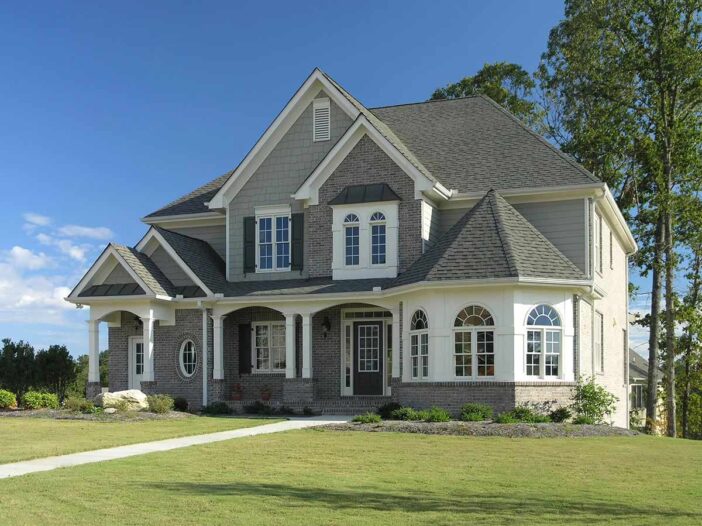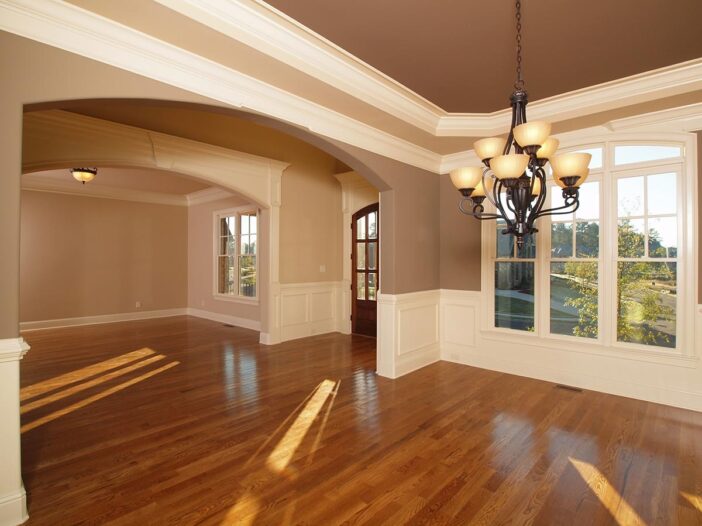Transforming your Omaha home into an energy-efficient sanctuary begins with the right siding solutions. As the seasons shift and energy costs fluctuate, homeowners seek reliable ways to enhance insulation and curb energy consumption.
In this comprehensive guide, we unveil the secrets to maximizing energy efficiency through strategic siding choices tailored to Omaha’s climate nuances.
Discover how selecting the ideal siding materials and implementing smart installation techniques can revolutionize your home’s comfort, sustainability, and long-term savings.
Understanding the Role of Siding in Energy Efficiency

Energy efficiency is a critical factor for homeowners looking to save on energy costs. An overlooked aspect of energy efficiency is the role that siding can play in improving the overall performance of a home.
Siding, when chosen and installed correctly, can significantly contribute to a home’s energy efficiency.
The Basics of Energy-Efficient Siding
Energy-efficient siding aims to minimize heat transfer between the interior and exterior of a home.
By preventing the gain or loss of heat through the walls, energy-efficient siding helps maintain a comfortable indoor temperature year-round.
This reduced reliance on heating and cooling systems lowers energy bills while reducing greenhouse gas emissions.
Factors Determining Energy Efficiency in Siding
Several key factors determine the energy efficiency of siding. These include insulation material and quality, siding thickness, and its ability to resist airflow.
The insulating properties of siding materials are crucial, as a higher insulation rating means better energy efficiency.
Additionally, factors such as airtightness, moisture resistance, and durability also impact a siding’s ability to improve energy efficiency.
Why Siding is Essential for Energy Efficiency in Omaha
Omaha experiences diverse weather patterns throughout the year, ranging from hot summers to cold winters.
This variance in temperatures highlights the importance of having energy-efficient siding in homes.
Types of Siding Materials that Improve Energy Efficiency

When it comes to energy efficient siding options, there are several materials to consider.
Each material offers unique benefits and features that contribute to improved energy efficiency.
Vinyl Siding
Vinyl siding is a popular choice due to its affordability, versatility, and low maintenance requirements.
It provides good insulation properties, preventing heat loss during colder months and keeping the home cool in the summer.
Vinyl siding also offers excellent resistance against moisture, making it suitable for the unpredictable weather conditions in Omaha.
Fiber Cement Siding
Fiber cement is a durable siding option that provides exceptional energy efficiency. This siding material offers excellent thermal insulation and is resistant to rot, pests, and fire.
Fiber cement siding is also known for its ability to withstand extreme weather, making it a reliable option for homes in Omaha.
Wood Siding
Wood siding has natural insulation properties, providing a degree of energy efficiency.
To enhance the energy efficiency of wood siding, additional insulation measures may be necessary.
Metal Siding
Metal siding is known for its durability and low maintenance requirements. While metal itself is not a great insulator, metal siding can be combined with insulation materials to improve energy efficiency.
Metal siding is resistant to weather damage, making it a suitable choice for homes in Omaha.
Insulated Siding
Insulated siding is specifically designed to maximize energy efficiency. It consists of a layer of foam insulation attached to the back of the siding material.
This added insulation improves the siding’s overall thermal performance, reducing heat transfer and enhancing a home’s energy efficiency.
Proper insulation helps reduce heat transfer and air leakage, improving a home’s ability to maintain a comfortable indoor temperature.
Why Insulation Matters

Insulation is a barrier against heat flow, preventing thermal energy from escaping or entering a home. Good insulation lowers energy consumption and promotes energy efficiency.
It also helps to minimize temperature variations within the home, ensuring consistent comfort levels throughout the year.
How Siding Insulation Works
Siding insulation is typically incorporated into the design of specific siding materials or added as a separate layer during installation.
Insulation materials, such as foam or other synthetic materials, are preferred for their excellent thermal properties.
This insulation layer helps regulate temperature and reduce the transfer of heat through the walls of a home, ultimately improving overall energy efficiency.
Different Types of Insulation
There are various types of insulation commonly used in energy-efficient siding. These include:
- Foam Board Insulation: Rigid foam boards are installed behind the siding to provide a continuous layer of insulation. They offer high insulation value and superior moisture resistance.
- Batt Insulation: Batt insulation consists of fiberglass or mineral wool insulation installed between the studs of the exterior wall. It effectively fills the gaps and provides thermal resistance.
- Blown-in Insulation: This type of insulation involves blowing loose insulation material into the wall cavities. It conforms to irregular shapes and provides excellent coverage.
- Spray Foam Insulation: It is popular for its ability to seal air leaks effectively. It offers outstanding thermal performance and can be applied in different forms, such as open-cell or closed-cell foam.
Maintaining Your Siding for Optimal Energy Efficiency

Proper maintenance is essential to ensure that energy-efficient siding performs optimally throughout its lifespan. Regular maintenance helps protect the siding from damage and maintains its insulation properties.
Routine Maintenance of Siding
Regularly inspecting and cleaning the siding is crucial for maintaining its energy efficiency. Homeowners should remove dirt, debris, and organic matter that can accumulate on the siding surface.
Additionally, addressing any damage promptly, such as cracks, holes, or loose sections, is essential to prevent air leakage and maintain energy efficiency.
Factors Affecting Siding Performance
Several factors can impact the performance of siding and its ability to contribute to energy efficiency.
These include exposure to extreme weather conditions, moisture intrusion, pests, and the natural aging process of materials.
Proper maintenance, such as applying protective coatings, sealing joints, and regularly inspecting for damage, can help mitigate these factors and ensure that the siding performs optimally.
When to Consider Siding Replacement
While regular maintenance can enhance the lifespan of siding, there may come a time when replacement is necessary.
Signs that it may be time to replace the siding include extensive damage, significant energy loss, increased energy bills, and a general decrease in the appearance and functionality of the siding.
Efficient Siding and Resale Value

Investing in energy efficient siding not only benefits homeowners in terms of energy savings but also has a positive impact on a home’s resale value.
Impact of Energy-Efficient Siding on Home Value
Energy efficiency is becoming increasingly significant to homebuyers. Energy efficient features, such as siding, can significantly enhance a home’s value and desirability in the real estate market.
Buyers are willing to pay a premium for houses with energy-efficient features that offer long-term cost savings and environmental benefits.
Return on Siding Investment
Energy-efficient siding is considered a wise investment due to its potential for high returns. The cost savings achieved can offset the upfront investment in siding materials and installation.
Additionally, the improved curb appeal and energy efficiency of a home can attract more potential buyers, resulting in a higher resale value.
Buyer Perception and Green Home Features
Buyers are increasingly drawn to homes that incorporate green and sustainable features. Energy-efficient siding portrays a home as environmentally conscious and forward-thinking.
The presence of energy-efficient siding can greatly influence buyer perception and the overall desirability of a property in Omaha’s real estate market.
Siding and Its Impact on Indoor Comfort

Energy-efficient siding not only contributes to energy savings but also significantly impacts the indoor comfort of a home.
Impact on Indoor Temperature
The insulation properties of siding play a vital role in maintaining a consistent indoor temperature. Energy-efficient siding helps minimize heat loss during winter and prevents heat gain during summer months.
This insulation barrier allows homeowners to maintain a comfortable indoor environment, reducing the need for excessive heating or cooling.
Reducing Energy Bills
By minimizing heat transfer and improving overall energy efficiency, siding can lead to substantial energy savings. Homeowners can see a decrease in their energy bills due to reduced reliance on heating and cooling systems.
These cost savings add up over time, making energy-efficient siding a smart investment for long-term financial benefits.
Siding as a Sound Barrier
In addition to improving energy efficiency, siding can also act as a sound barrier.
Well-insulated siding materials can help reduce the transmission of noise from outside sources, creating a quieter and more peaceful indoor environment.
The Right Contractor for Your Siding Project

Choosing an experienced contractor is crucial for a successful energy efficient siding installation.
Look for professionals with a solid track record of successful siding projects and a deep understanding of energy-efficient practices.
Also, ensure the company is licensed and insured enough to protect you and your property throughout the duration of the project.
Why Choose Stowe Creek LLC for Your Siding Needs
At Stowe Creek LLC, we prioritize customer satisfaction and delivering exceptional results.
With years of experience in the industry, our team has the knowledge and expertise needed to tackle any siding project, ensuring optimal energy efficiency.
We have successfully completed numerous siding projects, and our clients express their satisfaction with our workmanship and professionalism.
